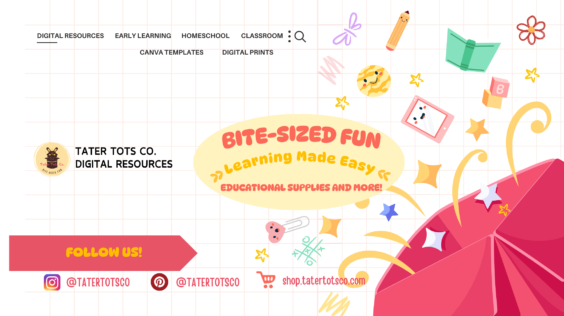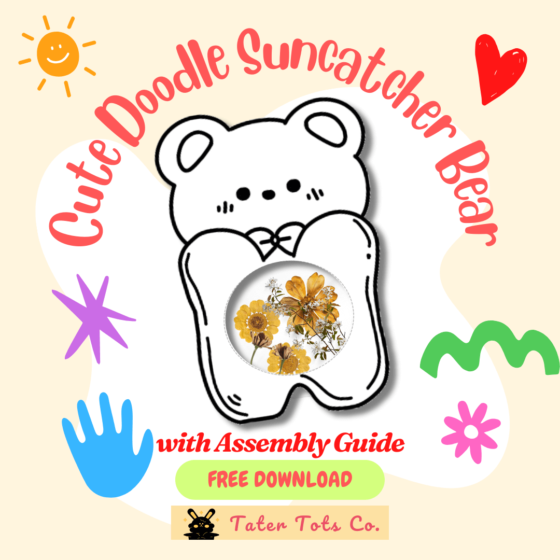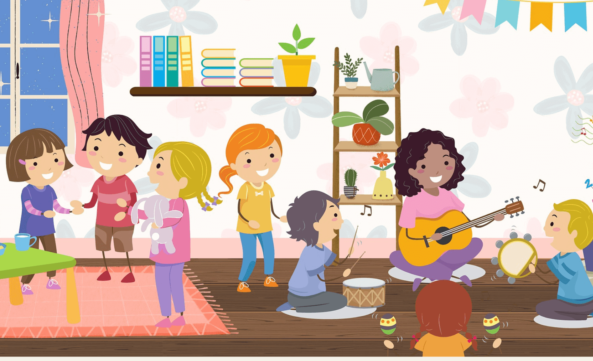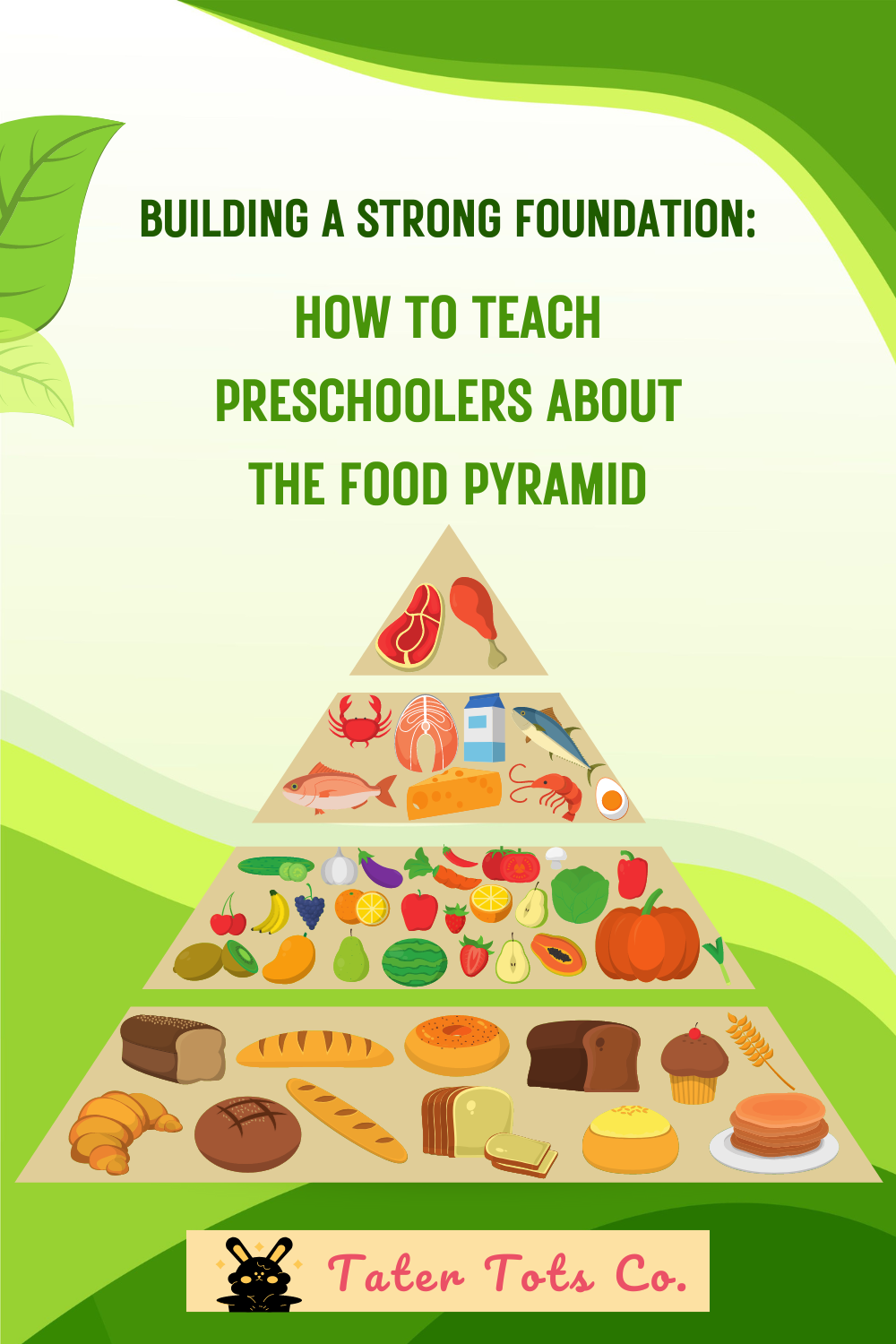
Introduction
As parents or educators, it is our responsibility to teach children healthy habits from a young age. Among the most crucial is the habit of eating well. But where do you start? One way is by introducing them to the healthy eating food pyramid.
The healthy eating pyramid is a simple visual guide that can help children understand which foods they should eat more of and which ones they should limit. In this post, we will explore the healthy eating pyramid and how you can use it to teach your preschooler about healthy eating habits that will last a lifetime.
Related Articles:
Promote Healthy Eating in Kids with a Free Printable Placemat and other resources
The importance of teaching preschoolers about healthy eating
Teaching preschoolers about healthy eating is more important than ever in today’s fast-paced and convenience-driven society. Establishing healthy eating habits at a young age sets the foundation for a lifetime of good health and well-being.
Preschoolers are at a critical stage of development, both physically and mentally. Their bodies are growing rapidly, and their brains are forming important connections. Proper nutrition plays a vital role in supporting their growth and development.
By teaching preschoolers about healthy eating, we empower them to make informed food choices and develop a positive relationship with food. They learn to recognize the difference between nutritious foods and those that are less beneficial. Educating them about the importance of a balanced diet, including fruits, vegetables, whole grains, lean proteins, and healthy fats, helps them understand the role each food group plays in their overall health.
In addition to physical health benefits, teaching preschoolers about healthy eating also promotes cognitive development. Numerous studies have shown a link between nutrition and brain function, with a well-balanced diet enhancing memory, concentration, and overall cognitive abilities. By fueling their bodies with nutritious foods, preschoolers are better equipped to focus, learn, and thrive in their early educational experiences.
Instilling healthy eating habits at a young age can help prevent the onset of chronic diseases later in life. Research has shown that poor nutrition during childhood can contribute to obesity, diabetes, and heart disease in adulthood. By teaching preschoolers about healthy eating, we empower them to make choices that will benefit their long-term health and reduce the risk of developing these chronic conditions.
It not only supports their physical and cognitive development but also sets the stage for a lifetime of good health. By providing them with the knowledge and tools to make nutritious food choices, we equip them with valuable skills that will benefit them throughout their lives.
What is the Healthy Eating Pyramid?
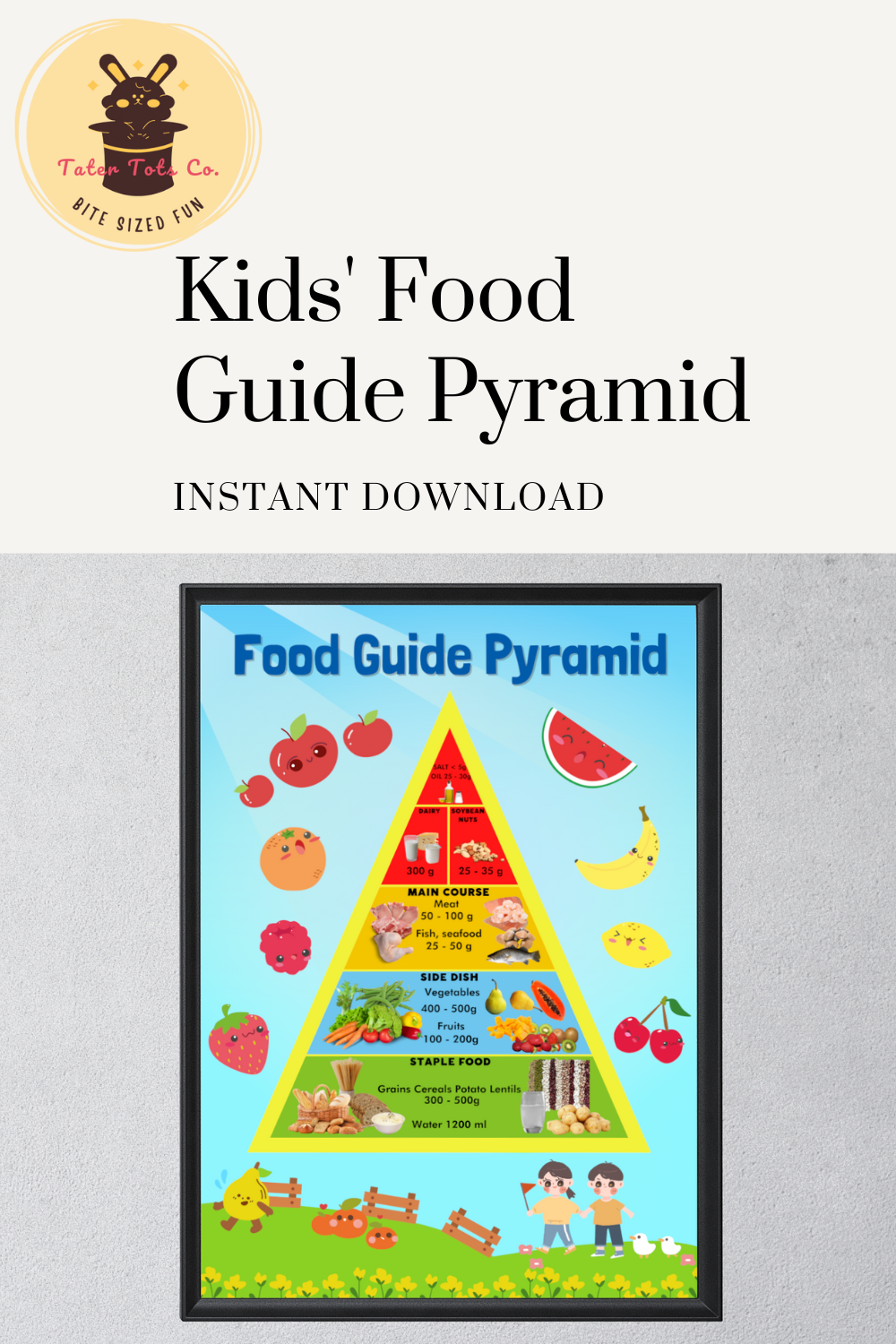
The Healthy Eating Pyramid is a visual representation of how to structure a balanced and nutritious diet. Designed specifically for preschoolers, it serves as a valuable tool in teaching young children about healthy eating habits. The pyramid is divided into different sections, each representing a food group and indicating the recommended quantity of consumption.
At the base of the pyramid, we find the largest section, which represents the foundation of a healthy diet – whole grains, such as bread, rice, pasta, and cereals. These foods are rich in fiber, vitamins, and minerals, providing sustained energy for growing bodies.
Moving up the pyramid, we encounter the next section, which showcases a colorful assortment of fruits and vegetables. These nutrient-dense foods are essential for maintaining good health and proper growth. They provide vitamins, minerals, and antioxidants that support a strong immune system and contribute to overall well-being.
The third section consists of a variety of protein-rich foods, such as lean meats, fish, eggs, and legumes. These foods are vital for building and repairing muscles, boosting brain development, and supporting the immune system. Encouraging preschoolers to consume a diverse range of proteins helps provide essential nutrients necessary for their growth and development.
Next, we come across the dairy section of the pyramid. Milk, yogurt, and cheese are excellent sources of calcium, which is crucial for strong bones and teeth. Including these dairy products in a preschooler’s diet helps support their bone development and ensures they receive the necessary nutrients for healthy growth.
Finally, at the top of the pyramid, we find the smallest section dedicated to fats, oils, and sweets. While these foods should be consumed in moderation, they still have a place in a well-balanced diet. Teaching preschoolers about the importance of limiting the intake of sugary foods and unhealthy fats helps instill healthy eating habits from an early age.
Understanding the Healthy Eating Pyramid empowers preschoolers by providing them with a visual guide to make informed food choices. By introducing this concept in an age-appropriate and engaging manner, educators and parents can lay a strong foundation for lifelong healthy eating habits.
Breaking down the Healthy Eating Pyramid for Preschoolers
When it comes to teaching preschoolers about healthy eating, it’s important to break down the concept of the Healthy Eating Pyramid into a language and visual representation that they can easily understand.
The Healthy Eating Pyramid is a valuable tool that helps children learn about the different food groups and the importance of a balanced diet.
Start by explaining the concept of the pyramid to the preschoolers. Use simple language and visual aids to help them grasp the idea that the pyramid represents the different food groups and their relative importance. Show them a visual representation of the pyramid, with colorful and engaging illustrations of fruits, vegetables, grains, proteins, and fats.
Next, focus on each food group individually, explaining the types of foods that belong in each group and their benefits for the body. For example, when talking about fruits and vegetables, emphasize their vibrant colors, delicious taste, and how they provide essential vitamins and minerals to keep our bodies healthy and strong.
To make it more interactive, consider using props or real examples of foods from each group. Let the children touch, smell, and even taste different fruits, vegetables, grains, and other foods to create a sensory experience that will enhance their understanding and appreciation for healthy eating.
Additionally, you can incorporate fun activities and games to reinforce the concepts. For example, you can organize a “sorting game” where the children categorize different food pictures into the appropriate food groups. This will help them practice identifying which foods belong in each category.
Remember to keep the language and activities age-appropriate, using simple and relatable examples that preschoolers can understand. By breaking down the Healthy Eating Pyramid in a way that is engaging and accessible, you will lay a strong foundation for their understanding of healthy eating habits and help them develop lifelong habits for a balanced and nutritious diet.
Explaining the different food groups to preschoolers
Explaining the concept of different food groups to preschoolers is a crucial step in teaching them about healthy eating habits. At this age, children are like sponges, eager to absorb new information and develop a strong foundation for their future choices.
To begin, it’s important to introduce the concept of food groups simply and engagingly. Consider using visuals such as colorful pictures or flashcards representing each food group. You could also incorporate interactive activities, such as sorting games or role-playing, where children can categorize different foods into their respective groups.
Start by introducing the main food groups: fruits and vegetables, grains, protein, and dairy. Explain that each group provides specific nutrients that are essential for their growth and development. For example, fruits and vegetables give them energy and help keep their bodies healthy, while grains provide carbohydrates for energy and protein helps build strong muscles.
Using relatable examples and familiar foods, showcase different options within each food group. Show them that fruits can be apples, oranges, or berries, while vegetables can include carrots, broccoli, or tomatoes. Make connections between these foods and their benefits, such as how eating oranges can help prevent getting sick or how milk makes their bones strong. This will help preschoolers understand that a variety of foods within each group is important for a balanced diet.
To reinforce their understanding, encourage hands-on experiences. Incorporate activities like cooking or snack preparation, where children can participate in selecting ingredients from different food groups. This way, they can visually see how various food groups come together to form a balanced meal.
Additionally, storybooks or songs about healthy eating can be valuable tools to make the learning experience enjoyable. Consider reading or singing along with preschoolers to engage their imagination and create a positive association with healthy eating.
Remember to keep explanations simple and use language that is easy for them to understand and relate to their everyday experiences. By taking the time to explain and explore the different food groups, you are laying a strong foundation for preschoolers to make informed and healthy food choices as they grow.
Fun and engaging activities to teach preschoolers about the Healthy Eating Pyramid

Introducing preschoolers to the concept of the Healthy Eating Pyramid can be both educational and enjoyable. By incorporating fun and engaging activities, you can help them develop a solid understanding of healthy eating habits that will benefit them for a lifetime.
- Interactive Food Sorting Game:
Create a game where children are given pictures of various food items and are tasked with sorting them into the different sections of the Healthy Eating Pyramid. This hands-on activity allows them to visually categorize foods based on their nutritional value and encourages discussion about why certain foods belong in specific sections. - Arts and Crafts with Food:
Get creative with food-themed arts and crafts projects. For example, provide children with a variety of fruits and vegetables, glue, and construction paper to make colorful collages. This activity not only allows children to explore different textures and colors but also reinforces the importance of including these foods in their daily diet. - Storytime with Healthy Eating Books:
Choose age-appropriate books that focus on healthy eating and read them aloud to the children. Use engaging voices and encourage participation by asking questions throughout the story. Afterward, discuss the key takeaways from the book and how they relate to the Healthy Eating Pyramid. - Food Group Scavenger Hunt:
Create a scavenger hunt where children search for different food items within each section of the Healthy Eating Pyramid. Provide them with a checklist and let them explore the classroom or outdoor area to find examples of fruits, vegetables, grains, protein, and dairy. This activity promotes active learning and helps children associate specific foods with their respective food groups. - Cooking and Taste Testing:
Involve preschoolers in simple cooking activities that emphasize the use of healthy ingredients. Allow them to measure, mix, and participate in age-appropriate tasks while preparing a nutritious snack or meal. Afterward, conduct a taste test where children can try different foods and discuss their flavors and textures. This hands-on experience helps them understand the importance of incorporating a variety of foods into their diet.
By incorporating these fun and engaging activities into your preschool curriculum, you can effectively teach children about the Healthy Eating Pyramid while fostering their curiosity, creativity, and healthy eating habits.
Incorporating healthy eating into daily routines and meals
Incorporating healthy eating into daily routines and meals is crucial when teaching preschoolers about the Healthy Eating Pyramid. By making healthy choices a regular part of their daily lives, you can help them build a strong foundation for lifelong healthy habits.
One effective way to achieve this is by involving preschoolers in meal planning and preparation. Encourage them to join you in the kitchen and let them have a say in selecting ingredients for meals. This not only gives them a sense of ownership and empowerment but also introduces them to different food groups and encourages them to make healthier choices.
Creating a routine around meals and snacks is also essential. Set specific meal times that allow for regular eating and avoid skipping meals. Make sure to provide a variety of nutritious foods from each food group, such as fruits, vegetables, whole grains, lean proteins, and dairy products. This helps children learn about the different food groups and ensures they are getting a balanced diet.
Additionally, make mealtimes enjoyable and a time for connection. Encourage conversation and create a positive atmosphere around the table. Offer praise and encouragement when children make healthy choices and try new foods. This positive reinforcement will motivate them to continue making healthy choices in the future.
It’s also important to limit the consumption of sugary drinks and snacks. Instead, offer water as the main beverage and provide healthy snack options like sliced fruits, yogurt, or whole-grain crackers. By limiting sugary foods and drinks, you are teaching preschoolers about the importance of moderation and the impact of their food choices on their overall health.
Remember, consistency is key. By incorporating healthy eating into daily routines and meals, you are instilling lifelong habits that will benefit preschoolers as they grow and develop. Teaching them about the Healthy Eating Pyramid at an early age sets them on a path toward a healthy and balanced lifestyle.
Strategies to encourage Healthy eating habits in Preschoolers
When it comes to teaching preschoolers about healthy eating habits, it’s important to employ strategies that are engaging, fun, and effective. Here are some tried-and-true methods to encourage healthy eating habits in preschoolers:
- Lead by example: Children often mimic the behaviors of adults around them. Set a positive example by incorporating healthy food choices into your meals and snacks. When children see you enjoying fruits, vegetables, and whole grains, they are more likely to follow suit.
- Make it visual: Utilize visual aids to introduce the concept of the Healthy Eating Pyramid to preschoolers. Display colorful posters or create interactive charts that showcase the different food groups and their importance. This visual representation will help preschoolers understand the variety of foods they should be consuming for a balanced diet.
- Get creative with food: Make mealtime exciting by involving preschoolers in the food preparation process. Encourage them to help wash, chop, and assemble ingredients for meals or snacks. Additionally, make the eating experience fun by creating food art or arranging fruits and vegetables into playful shapes or patterns.
- Offer a variety of options: Introduce a wide range of nutritious foods to preschoolers and encourage them to try different flavors and textures. Provide a mix of fruits, vegetables, lean proteins, whole grains, and dairy products. Allow them to explore and develop their preferences while ensuring that all food groups are represented.
- Engage in sensory experiences: Encourage preschoolers to explore food through their senses. Set up activities where they can touch, smell, and taste different fruits, vegetables, and other healthy ingredients. This sensory interaction fosters a positive relationship with food and helps them become more adventurous eaters.
- Involve the preschoolers in meal planning: Give preschoolers a sense of ownership by involving them in meal planning. Allow them to choose from healthy options for each meal or snack. This not only empowers them but also encourages them to make mindful food choices.
- Provide education through play: Utilize games, puzzles, and interactive activities to teach preschoolers about the Healthy Eating Pyramid. Incorporate pretend play with toy food sets or kitchen playsets, where children can create their balanced meals and learn about portion sizes.
Remember, building healthy eating habits in preschoolers is a gradual process. Be patient, and consistent, and celebrate small victories along the way. By employing these strategies, you can lay a strong foundation for lifelong healthy eating habits in preschoolers.
Dealing with picky eaters and food preferences
Dealing with picky eaters and food preferences can be a challenge when teaching preschoolers about the healthy eating pyramid. As we all know, young children can be particularly selective when it comes to their food choices. They may have strong preferences for certain foods while refusing to try new or unfamiliar ones.
One effective strategy is to involve the children in the meal planning and preparation process. By allowing them to participate in grocery shopping or helping in the kitchen, they can develop a sense of ownership and curiosity about the food they eat. Encourage them to explore different fruits, vegetables, grains, and proteins, explaining the nutritional benefits of each item.
Another approach is to make healthy eating fun and engaging. Consider using colorful plates, fun-shaped cookie cutters, or arranging food in creative ways to make it visually appealing. Encourage the children to taste and try new foods, even if it’s just a small bite. Praise their efforts and provide positive reinforcement when they make healthy choices.
It’s also important to respect the child’s individual preferences and avoid pressuring or forcing them to eat something they dislike. Instead, offer a variety of healthy options and let them choose what they want to eat. Keep in mind that it may take several exposures to a new food before a child develops a liking for it.
Additionally, involve parents and caregivers in the process. Share tips and suggestions with them on how to encourage healthy eating habits at home. Communication and collaboration between the school and parents can create a consistent approach to promoting healthy eating.
Ultimately, patience and persistence are key when dealing with picky eaters. By creating a positive and supportive environment, offering a variety of healthy options, and involving children in the decision-making process, you can help preschoolers develop a well-rounded understanding of the healthy eating pyramid and make positive choices about their nutrition.
Struggling with a picky eater? Watch our video for tips and tricks on how to handle picky eating in toddlers and make mealtime a stress-free experience for the whole family.
Looking for more parenting tips? Check out our Inspire My Tot video series for practical advice and inspiration on raising happy, healthy children.
Involving parents and caregivers in promoting healthy eating at home and school
Involving parents and caregivers in promoting healthy eating at home and school is crucial for the overall success of teaching preschoolers about the healthy eating pyramid. When children receive consistent messages about healthy eating from both home and school environments, it reinforces the importance of making nutritious food choices.
One effective way to involve parents and caregivers is by providing educational resources and materials that they can utilize at home. This can include simple yet informative handouts, recipe ideas, and tips on how to make mealtime a fun and educational experience. By empowering parents with knowledge and practical tools, they can actively contribute to their children’s healthy eating habits.
Schools can also organize workshops or events to engage parents and caregivers in learning about the healthy eating pyramid and its benefits. These sessions can involve interactive activities, such as cooking demonstrations, taste tests, and discussions on meal planning. By actively involving parents and caregivers, they become partners in the process of teaching preschoolers about healthy eating, fostering a sense of shared responsibility.
Furthermore, communication channels between teachers and parents should be open and encouraged. Regular updates on classroom activities, menu planning, and healthy eating initiatives can be shared with parents through newsletters, emails, or dedicated parent-teacher meetings. This ensures that parents are well-informed and can extend the teachings of healthy eating beyond the school environment.
Additionally, creating a supportive and inclusive environment is crucial. Encouraging parents to share their own experiences, recipes, and cultural food traditions can enrich the learning experience for both students and their families. This helps to create a sense of community and reinforces the idea that healthy eating is a shared value.
By involving parents and caregivers in promoting healthy eating at home and school, we can establish a strong foundation for preschoolers to develop lifelong healthy eating habits. Together, we can empower children to make informed food choices and prioritize their overall well-being.
The long-term benefits of teaching preschoolers about the Healthy Eating Pyramid
Teaching preschoolers about the Healthy Eating Pyramid may seem like a simple task, but the long-term benefits are truly remarkable. By instilling healthy eating habits at a young age, you are equipping children with the tools they need to make informed decisions about their nutrition for the rest of their lives.
One of the most significant long-term benefits is the prevention of chronic diseases. Childhood obesity rates have been on the rise, leading to an increased risk of conditions such as diabetes, heart disease, and certain types of cancer. By teaching preschoolers about the Healthy Eating Pyramid, you are providing them with a solid foundation for a lifetime of good health.
Additionally, teaching preschoolers about healthy eating can positively impact their cognitive development. Numerous studies have shown that proper nutrition is linked to improved brain function, memory, and overall cognitive performance. When children fuel their bodies with nutritious foods, they are setting themselves up for success academically and intellectually.
Furthermore, teaching preschoolers about the Healthy Eating Pyramid promotes positive social interactions and self-esteem. When children understand the importance of healthy eating, they can make better choices when it comes to food options. This can lead to increased confidence, as they feel empowered to make decisions that support their well-being. Additionally, when children are knowledgeable about nutrition, they can share this information with their peers, fostering a healthy and supportive environment.
In conclusion, the long-term benefits of teaching preschoolers about the Healthy Eating Pyramid are extensive. From preventing chronic diseases to enhancing cognitive development and promoting positive social interactions, these early lessons in nutrition lay a strong foundation for a lifetime of healthy choices. By investing in the health and well-being of our youngest generation, we are shaping a brighter and healthier future for all.
Educational Posters & Healthy Eating Resources
Introduce young children to healthy eating with The Simple Healthy Food Pyramid – a DIY Write and Color Poster. This teaching resource is perfect for preschool and kindergarten classrooms and provides an easy guide to nutrition. Download the PDF instantly and start learning today!
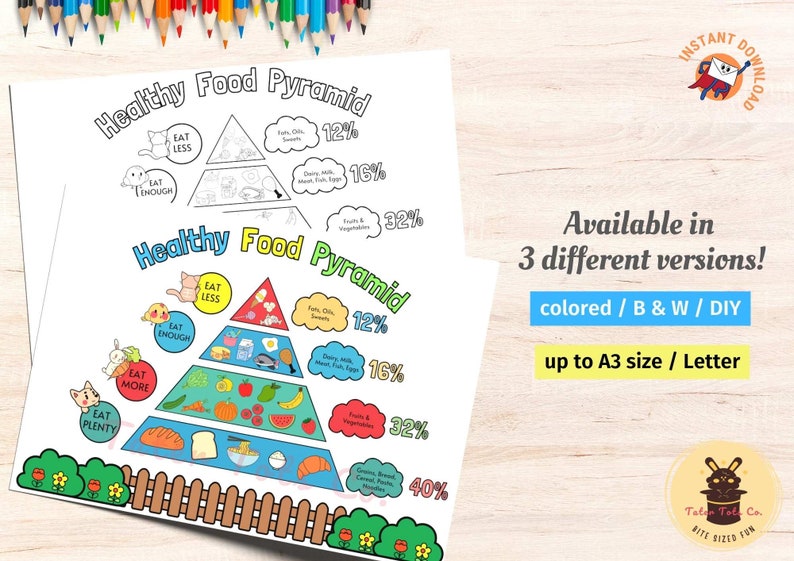
Discover these Kids’ Food Guide and Healthy Eating Food Pyramids – a tool designed to help kids and families make healthy choices and create a balanced lifestyle. Learn about the food groups and recommended serving sizes to achieve optimal nutrition.
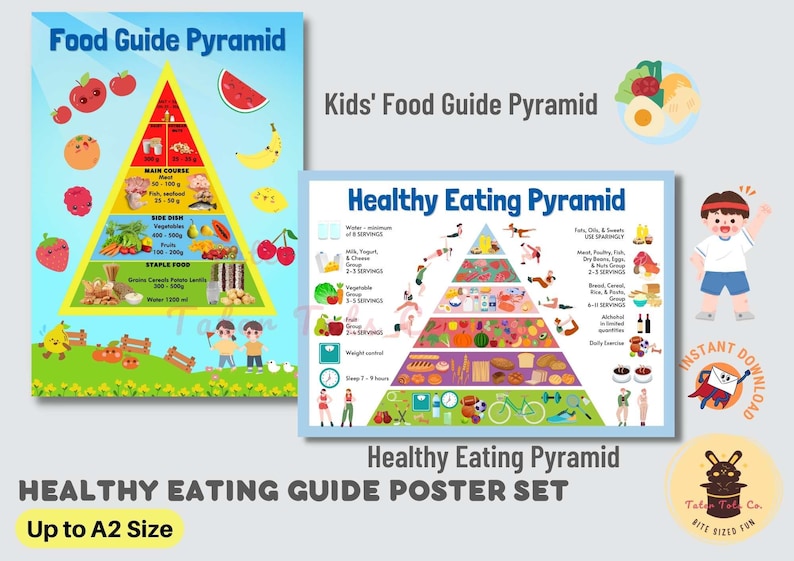
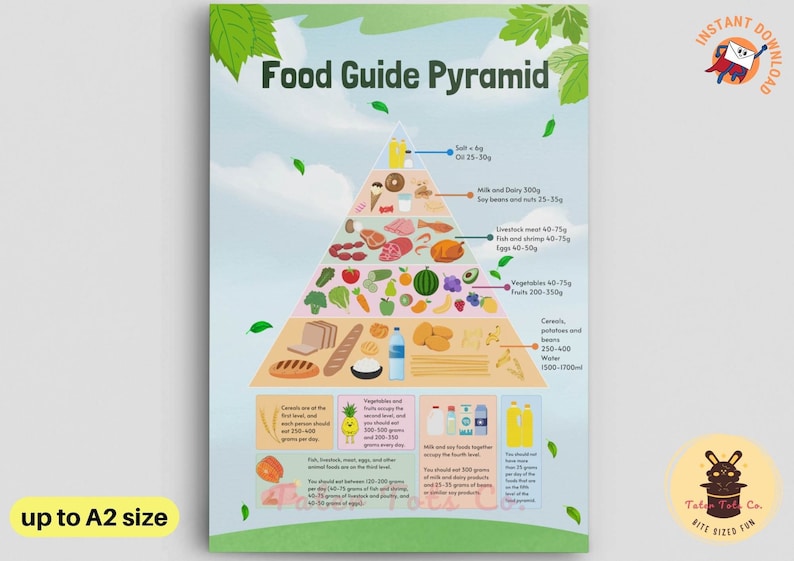
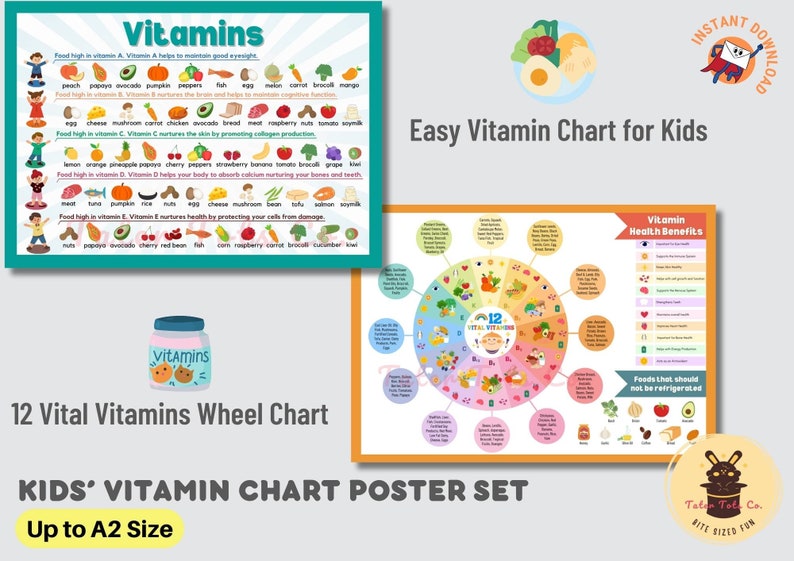
Conclusion
We hope you found our article on teaching preschoolers about the Healthy Eating Pyramid helpful and informative. Building a strong foundation for healthy eating habits early on is essential for the overall well-being of our little ones. By introducing them to the concept of the Healthy Eating Pyramid, we can instill in them the importance of a balanced diet and make mealtime a fun and educational experience.
Remember to be patient, creative, and lead by example as you guide your preschoolers towards a lifetime of healthy choices. Here’s to nourishing their bodies and minds for years to come!

Don’t forget to follow us on Facebook/Pinterest for the latest blog updates, freebies, and Ukulele printables.
[menu_in_post_menu menu=96 style=”list”]
Warmest Regards,





